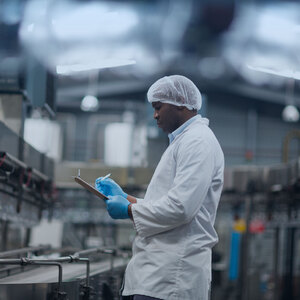
Nowadays, carrying out effective inventory management and sales forecasting is challenging. It has become common when visiting a store (physical or online) to hear phrases like "Sorry, the product is out of stock" or "We don't have more sizes of that item." Often, this lack of inventory is caused by a dramatic shift in buying habits between online and physical stores, as well as the restrictions and mobility constraints resulting from the pandemic.
What is inventory and its purpose?
Inventory can be defined as the quantity of a product that a company must have for subsequent commercialization. In many cases, this inventory needs to undergo a transformation process before being sold, acting as a facilitator for the continuity of the production process, such as flour in bread making. On other occasions, the purpose of this inventory is the direct satisfaction of the consumer.
In other words, it involves maintaining finished products in the warehouse to provide them to customers whenever they want.
Impacts of inventory management on an organization
At an economical level, stocks do not provide any return until they cease being stocks and become sold products. In many cases, these stocks represent a significant percentage of a company's working capital, making effective inventory management necessary. However, as a general rule, companies tend to maintain excessive stock due to the fear of missed opportunities, that is, the fear of being unable to meet market demand.
At an organizational level, this stock "alleviates" this fear. Firstly, the sales director wants to have sufficient stock to meet any demand. At the same time, the procurement director focuses on maintaining high stock levels to negotiate better conditions with suppliers for purchasing raw materials. Similarly, the production director aims to plan optimal and efficient production without having to worry about urgent orders due to stock shortages of specific items.
This is why the concept of "safety stock" exists. These are stocks maintained above the forecasts, intended to maintain service levels in case of any deviations, whether they are related to production, logistics, or commercial aspects.
Safety stocks for raw materials are used to cover uncertainties in the supply of goods, while safety stocks for finished products aim to compensate for deviations caused by market uncertainty. Additionally, safety stocks for work-in-progress (WIP) or semi-finished goods seek to compensate for uncertainties in market demand, ensuring the ability to quickly produce items if it is detected that product delivery to the customer is impossible.
Costs associated with inventory management
This safety stock should be optimal, meaning it should not be excessive and should only exist in the quantities that are truly necessary. This is because there are several costs associated with inventory management, as explained below:
- Storage costs
- Setup costs
- Acquisition costs
- Stockout costs
Storage costs include all costs directly related to maintaining stock in the inventory, such as financial opportunity cost, insurance, maintenance costs, obsolescence, etc.
These costs are associated with initiating a purchase order, also known as the ordering cost. This cost is independent of the quantities purchased or manufactured, and its total value is proportional to the number of purchases made during a specific period.
This refers to the total economic amount spent on making a purchase and usually depends on the batch size used. It's worth noting that suppliers sometimes offer quantity discounts for orders that exceed a certain level.
These costs occur when an order cannot be fulfilled due to lack of stock. Stockouts can have two effects:
A. Lost sales: Orders that cannot be fulfilled are lost. Customers turn to other suppliers, resulting in an opportunity cost and potential loss of customer loyalty.
B. Backorders: Unfulfilled orders are recorded and delivered when stock becomes available. This may result in contract penalties, damage to the company's reputation, and loss of future sales.
In conclusion, proper inventory and item management are key to meeting market demand and avoiding unnecessary costs. One way to deal with market uncertainty is by making advanced demand forecasts, which serve as input for managing subsequent operations, both in production and sales. Do you want us to help you improve your inventory management?
Do you want us to help you improve your inventory management or make sales forecasts that can help you achieve supply chain excellence? Contact us 📆!




























































 Imperia_thumbnail.jpg)





















